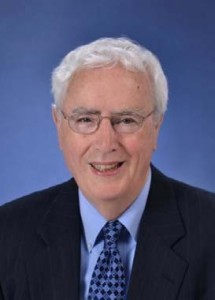
Reminiscence
Prof. W. D. Liam Finn
Professor W.D.L. Finn has been for many years Professor of Civil Engineering at the University of British Columbia, Canada, where he has also been Head of the Department of Civil Engineering and Dean of Applied Science. He has made significant contributions to the development of soil dynamics and to the mitigation of seismic and liquefaction disasters all over the world. This interview was made during the Seventh International Conference on Case Histories in Geotechnical Engineering in May, 2013, that was organized by Prof. Shamsher Prakash in Wheeling, Illinois, USA.
RECENT ACTIVITIES
Prof. Finn’s most important activity in the recent times has been the seismic retrofitting of school buildings in British Columbia. This is a 15- year project with initial funding of $1.5 billion that attempts to ensure life safety in schools for students during an earthquake. Cost-effective retrofitting is a very significant issue and the program relies on seismic performance-based design to achieve its goals. The standard of satisfactory performance is that the probability of school collapse should be less than 2% in 50 years. School buildings were classified into 32 generic types with up to 3 floors. The performance of each generic type was assessed by nonlinear dynamic analysis for 30 different earthquake motions representing crustal, sub-crustal and subduction motions and for a variety of soil conditions. In all 9 million analyses were conducted. The results of the analyses were assembled into a data base that can be accessed by a web- based “seismic analyzer”. The designer does not have to conduct any nonlinear analyses. He can get all significant retrofit data from the analyzer. This approach speeds up the retrofit process and achieves uniform level of seismic resilience for the buildings. Professor Finn has received 3 provincial and 2 national awards for his work on the schools project.
BEST MEMORY IN GEOTECHNICAL CAREER
In early 1990s Prof. Finn investigated the seismic damage of levees of the Kushiro River in Hokkaido, Japan. Being situated on peaty subsoil, the Kushiro River levee was heavily damaged by liquefaction during the 1993 Kushiro-oki earthquake and unexpectedly many months were spent on their remediation. Prof. Finn studied the prioritization of remediation. He was interested in the correlation between the levee height and the thickness of liquefiable subsoil as well as that of the unliquefiable surface crust, and a later study by Japanese engineers showed a wonderful agreement between his prediction and reality.
In 2000s, Prof. Finn was a professor of Kagawa University in Takamatsu, Japan, for 5 years and worked as the chairman of TC4 of ISSMGE on earthquake problems. He has very fond memories of this city and, in particular, loves the Ritsurin Park. Some information on this park is available in the appendix of this article.
Download ISSMGE Bulletin – Volume 7 Issue 4
![]() PDF format
PDF format




































